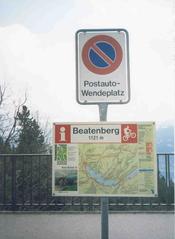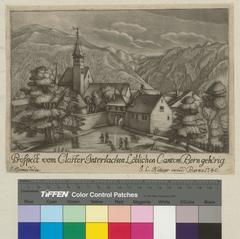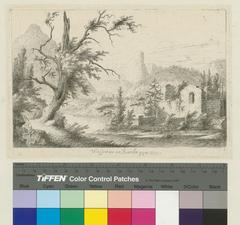Visiting Hours, Tickets, and Historical Sites of Alpengarten, Interlaken
Date: 24/07/2024
Introduction
Nestled in the breathtaking Bernese Oberland region of Switzerland, the Schynige Platte Alpine Botanical Garden, more commonly known as Alpengarten, offers an unparalleled opportunity to explore the rich and diverse flora of the Swiss Alps. Established in 1927, Alpengarten has become a must-visit destination for nature enthusiasts, tourists, and researchers alike, providing a unique blend of natural beauty and cultural heritage. The garden, located near Interlaken, spans over 8,000 square meters and is home to more than 600 species of alpine plants, meticulously curated to represent different alpine habitats (Wanderlog). Besides its botanical allure, Alpengarten is also a site of significant scientific research and education, offering annual courses directed by the Institute of Plant Sciences of the University of Bern (Planetware). This comprehensive guide aims to provide you with all the information you need for a memorable visit, including the garden’s history, visitor tips, ticket information, and nearby attractions.
Table of Contents
- [History and Significance](#history-and-significancehistory-and-significance)
- [Establishment and Early Development](#establishment-and-early-developmentestablishment-and-early-development)
- [Key Milestones](#key-milestoneskey-milestones)
- [Challenges and Innovations](#challenges-and-innovationschallenges-and-innovations)
- [Visitor Information](#visitor-informationvisitor-information)
- [Opening Hours and Ticket Prices](#opening-hours-and-ticket-pricesopening-hours-and-ticket-prices)
- [Travel Tips](#travel-tipstravel-tips)
- [Visitor Experience](#visitor-experiencevisitor-experience)
- [Trails and Scenic Views](#trails-and-scenic-viewstrails-and-scenic-views)
- [Nearby Attractions](#nearby-attractionsnearby-attractions)
- [Cultural and Educational Impact](#cultural-and-educational-impactcultural-and-educational-impact)
- [Educational Programs](#educational-programseducational-programs)
- [FAQ](#faqfaq)
- [Conclusion](#conclusionconclusion)
- [Sources](#sourcessources)
History and Significance
Establishment and Early Development
The Schynige Platte Alpine Botanical Garden was established in 1927 with the primary aim of showcasing and studying Swiss Alpine plants in their natural habitats. The garden’s creation was a collaborative effort involving several key figures, including chemist Dr. R. Jenzer and hotelier W. Hofmann, who raised the matter at the Swiss Botanical Society’s spring meeting in Interlaken in 1925. Their advocacy led to the founding of the Schynige Platte Alpine Garden Society on June 10, 1927, with H. Itten as its first president.
Key Milestones
- 1893: The Schynige Platte Railway was opened, providing easier access to the plateau.
- 1927: Founding of the Schynige Platte Alpine Garden.
- 1928: Initial work on the garden began.
- 1929: Official opening of the Alpine Garden.
- 1931: Opening of the residential and study building.
- 1932: The first Alpine botanical course was held, a tradition that continues annually with some interruptions.
Challenges and Innovations
The garden’s unique mountain location presents particular challenges for the gardening team, including harsh weather conditions and difficult terrain. Despite these challenges, the garden has thrived, nurturing over 600 types of Alpine blooms such as snowbells, arnicas, gentians, anemones, and edelweiss. The garden’s design, largely attributed to head gardener Herrmann Schenk and his team, has remained faithful to its original concept of presenting species in their natural plant communities.
Visitor Information
Opening Hours and Ticket Prices
Alpengarten is typically open from June to October, with specific hours varying by month. Visitors are advised to check the official website for the most up-to-date opening hours. Ticket prices are generally affordable, with discounts available for children, students, and groups. A combination ticket that includes a ride on the Schynige Platte Railway and entrance to the garden is also available.
Travel Tips
- How to Get There: The easiest way to reach Alpengarten is via the Schynige Platte Railway from Wilderswil, which offers stunning views of the surrounding landscape.
- Best Time to Visit: The best time to visit is during the summer months when the Alpine flowers are in full bloom.
- What to Bring: Wear comfortable walking shoes, bring a hat and sunscreen, and carry a water bottle.
Visitor Experience
Trails and Scenic Views
Visitors to Alpengarten can explore a variety of trails that wind through the garden’s diverse plant communities. The main circuit, initially measuring 420 meters with an average width of 1.2 meters, has been expanded to include 500 meters of side paths. These trails offer breathtaking views of the surrounding Bernese Oberland and provide an immersive experience of the region’s natural beauty.
Nearby Attractions
While in Interlaken, consider exploring other nearby attractions such as Lake Thun, Lake Brienz, and the Harder Kulm viewpoint. These sites offer additional opportunities for hiking, boating, and enjoying panoramic views of the Swiss Alps.
Cultural and Educational Impact
Educational Programs
The garden has played a significant role in promoting botanical education and conservation. The annual Alpine botanical course, directed by the Institute of Plant Sciences of the University of Bern, attracts students and researchers from around the world. This course, along with other educational programs, underscores the garden’s commitment to fostering a deeper understanding of Alpine ecosystems.
FAQ
What are the Alpengarten visiting hours?
The garden is open from June to October, with specific hours varying by month. Check the official website for the latest information.
How much are Alpengarten tickets?
Ticket prices are affordable, with discounts available for children, students, and groups. Combination tickets with the Schynige Platte Railway are also available.
What should I bring when visiting Alpengarten?
Wear comfortable walking shoes, bring a hat and sunscreen, and carry a water bottle. A camera is also recommended to capture the stunning scenery.
Conclusion
The Alpengarten at Schynige Platte is not just a botanical garden; it is a testament to the dedication and passion of those who have worked to preserve and showcase the unique flora of the Swiss Alps. Its historical significance, coupled with its role in education and conservation, makes it a must-visit destination for anyone traveling to Interlaken. The garden’s rich history, from its founding in 1927 to its ongoing contributions to botanical research, underscores its importance as a cultural and scientific landmark in the heart of Switzerland. For more updates and travel tips, download the Audiala mobile app and follow us on social media.
Sources
- Wanderlog. (n.d.). Botanischer Alpengarten Schynige Platte. https://wanderlog.com/place/details/1253796/botanischer-alpengarten-schynige-platte
- Planetware. (n.d.). Interlaken. https://planetware.com/tourist-attractions-/interlaken-ch-be-inte.htm
- Holidays to Switzerland. (n.d.). 60 Attractions and Things to Do in Interlaken and Surrounds. https://holidaystoswitzerland.com/60-attractions-and-things-to-do-in-interlaken-and-surrounds/


